News
FLASH SALE: Up to 74% off Women's History and Topics Titles March 01 2019

 “The authors connect ordinary lives with enduring themes.” $24.99 |

$25.99 |

$18.99 |

$18.99 |

$24.99 |
Print sale ends Sunday, 3/31/2019
|
$31.95
$22.37 |

|

|

|

|
FLASH SALE: Select titles up to 75% off! February 14 2019
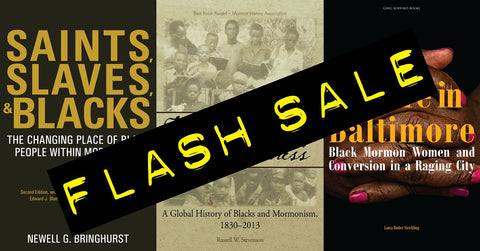
 “Here are riches that you won’t want to miss.” $18.99
|
“Led to a paradigm shift in my understanding of Mormon history.” $23.99
|
“Invaluable as a historical resource.” $26.99
|
Print sale ends Thursday, 2/28/2019
|
$20.95 |
$27.95 |
$32.95 |
Q&A with Laura Rutter Strickling for On Fire in Baltimore: Black Mormon Women and Conversion in a Raging City September 11 2018

Q: Will you give us a little background into your formal education and how it relates to this book.
A: I received an undergraduate degree from Brigham Young University way back in 1977, then, twenty years later, completed post-baccalaureate work in Spanish at Augusta State University. In between this time, our family of six lived in southern Spain for seven years where the kids attended Spanish schools in Rota, across the Bay of Cádiz. Later, back in the States, I taught high school Spanish in North Carolina until our four kids left home, then went on to do graduate work. I received an M.A. from the University of Maryland Baltimore County in Intercultural Communication, and a Ph.D. in Sociocultural Linguistics. My doctoral research focused on the impact of educator's attitudes toward students who speak African American English, and I developed a model that explains the process of reframing a linguistic mindset. This model shows that standard language ideology (in this case, the belief that Black English is poor English, instead of a language variation) is not easily modified, but requires incremental training, and the implementation of linguistically aware practices followed by analysis. I also completed a two-year post-doctoral position in Urban Education in Baltimore where we evaluated the efficacy of Turnaround interventions in low performing schools. In terms of writing On Fire in Baltimore, my academic preparation provided me with an interdisciplinary theoretical foundation regarding language, race relations, and intercultural difference; and living in the city provided me with day to day experience in an interracial neighborhood.
Q: How did this study come together and what were your goals with it?
A: Well, come together is probably a good description because it implies a process. Qualitative research can be fluid and take on twists and turns as the research unfolds. I began a study focused on recording the life and conversion of the African American women in my congregation—an endeavor that spanned over ten years and resulted in twenty-five recorded interviews and four hundred pages of transcription. But the interviews were more than data collection; they opened the door to sisterhood and sojourn into the Black community. Sitting side by side in their living room or at the kitchen table, these women would draw me into their narrative with Black vernacular, laughter, and tears. More than once I would find myself holding their hand as their eyes welled up from painful memories or smiling at their sarcasm as they described a family member. And my association did not end with the interviews; the women would invite me to family celebrations and birthdays or ask for rides across town to pick up prescriptions. They would call me out of the blue because they “had a feeling,” then tell me another story about their lives. These church sisters also let me know that they were interested in my work. “How are the stories coming?” some would ask as they passed me in the church halls. “We are praying for you,” they would tell me as the unfinished book advanced from months to years.
But our time together was not always easy; sometimes there were tense moments that were difficult to navigate. Sometimes I would find myself in a racialized snare that I could not resolve by intuition. A feminist theoretical approach obligated me to be mindful of these emotions and enabled me to adopt a reflective process aimed at exposing my biases and questioning my responses. It provided me with the theoretical underpinning to acknowledge that, as a researcher, I would naturally affect the research I do, but also, in the process, I would be affected by it. Keeping this in mind, I documented the evolution of my thoughts as I interacted with these Black women and as I attempted to peel back the layers of my racialized assumptions.
Q: You mentioned that what began as a linguistic study quickly turned into racially-entangled conversion narratives. Can you explain that a little further?
A: What I’m saying is that intersectionality became clearer to me. By intersectionality, I mean that socially constructed categories such as, race, class, and gender-hierarchy interrelate and come together to impact the degree of marginalization or healthy acceptance into a society. You cannot separate these Black women’s marginalized lives from their conversion stories. For example, Delilah talks about “the worst time in her life” when her husband pushed her to the floor, then held a gun to her head. After that, he beat her up, so she left him. Alone and without food for her children or electricity for the house, she went to her Baptist Church seeking help. Instead of help, she ended up losing twenty dollars. In anger and without resources, she yells at God, telling him that she would not go to church anymore—God would have to send a church to her. A few days later, she says “two White boys came knocking at my door, and I wondered, what are these White boys doing in this Black neighborhood?” Delilah says that her life changed after baptism into the Church of Jesus Christ.
But once Black women join the Latter-day Saints, they also have to reconcile that the Church denied them full access to full membership before 1978. Their membership was yet another layer of marginalization. The women in On Fire in Baltimore each have their own way of explaining the reason for this lack of access. Delilah, for example, researched the story of Black Mormon pioneer, Jane Manning James, and found comfort in Jane’s fortitude.
Q: Can you provide one or two specific examples from the book of stories that stood out to you in particular?
A: Every one of these Black sisters’ stories impacted me, but I can offer two examples. The first is found at the beginning of the book and was an experience that left me deeply reflective as to where I would take my work. In this excerpt, I am interviewing Ruth:
"I love doing these interviews," I explain, taking a stab at getting the interview started, "because I feel like the sisters are with me every day when I listen to their recorded voices and transcribe their words." Ruth smiles at me and nods her head, and I'm feeling confident in the work I'm doing. But my satisfaction is short lived, and I am quickly reminded of how fragile the interview process can be. With my next comment, I fall from academic grace onto uncertain interview ground. I tell Ruth that I have run across colleagues who were surprised to learn that there were African American Mormon women in Baltimore, and that they were interested in hearing their conversion stories. Without a hint of accusation and with her customary mild voice, Ruth asks, "Are you only interviewing African American women? Because I'm not African American. My father was White and my mother was Native American."
I catch my breath for one speechless moment as a wave of panic washes over me. I had assumed Ruth's racial identity. After years of theoretical study regarding the hegemonic construction and social complexities of identity, culture and race--how had I done that?
This experience sent me on a four-month journey researching race--in particular, the racialization of America and the formation of whiteness.
The second excerpt is found toward the end of the book and shows the reader how this work is more than a series of interviews or a collection of conversion stories. It illustrates how my life became intertwined with the Black sisters in my congregation. At the time of this story, I was the choir director and Clara was a member of the choir:
“[A]s I went to sit down Clara appeared out of nowhere. ‘Could we meet together for ten minutes some time?’
Thinking that this must be a question about the choir, I answered, ‘How about now?’ and followed her out the chapel door into the hall. But when she kept on walking, I realized that she must have wanted to meet more privately. Clara led me into a classroom and closed the door.
‘Can we have a prayer?’ She was asking me. In the split second that I automatically said yes, I was also wondering which one of us would be praying and for what purpose. But I was not left to ponder long because Clara immediately grabbed my hands, facing me. She pulled me close and started praying out loud in a strong voice. But she had crossed her arms in front of her chest so that she was holding onto my hands, right to right and left to left. I did not hear what Clara was saying at first, because I was trying to figure out the meaning of this hand position.
She was praying for me. ‘Heavenly Father, thank you for Sister Strickling. She was inspired to come today. Help heal her with the treatment she is going through. Thank her Heavenly Father. Heal her. Heal her Heavenly Father.’”
Q: In what ways did this study challenge your view of whiteness, and how race impacts your own perspective?
A: Generally, we do not become “raced” until we experience a racialized encounter. In other words, because race is a social construct, we are not aware of our whiteness, blackness, or browness, until someone’s behavior points it out. Several of the Black women in this book told me that they did not realize they were Black until they got their first paycheck and went shopping only to be told that Black people could not try on clothes in that store. Growing up in rural Oregon, I did not have many racialized experiences, and living in Spain, I viewed my day to day encounters with Spaniards in terms of cultural or linguistic difference. Baltimore was a good place for me to learn about racialized behaviors.
A: What are you hoping that readers will gain from this book?
That the last shall be first and the first shall be last. In other words, I'm hoping that these stories will inspire readers of all races to question their assumptions. Lorraine Hansberry, author, and the first Black playwright to write a play that was performed on Broadway, said: [Do you want to know about] love . . . and life? Ask those who have tasted of it in pieces rationed out by enemies . . . Ask . . . those who have loved when all reason pointed to the uselessness and fool-hardiness of love. Out of the depths of pain we have thought to be our sole heritage in this world—oh, we know about love! Perhaps we shall be the teachers when it is done.[1]
Today, social discourse on race and racism persists, in the news, on talk radio and social media, but how do we go about being the teachers and the students that Hansberry described? What quality of relationship would foster this reciprocity? This book is really the beginning of that discussion.
__________
[1] Lorraine Hansberry, To Be Young, Gifted and Black: A Portrait of Lorraine Hansberry in Her Own Words, 104. Hansberry (1930–1965) playwright and author, wrote A Raisin in the Sun (1959) and was the first Black playwright to write a play that was performed on Broadway.
Preview a sample of On Fire in Baltimore
Upcoming speaking and signing events:
Tue Oct 23 at 6:30pm | Weller Book Works (SLC) | RSVP
Thu Oct 25 at 7:00 pm | Writ & Vision (Provo) | RSVP
Fri Oct 26 at 6:30 pm | Thunderbird Books (Ephraim) | RSVP
Author Spotlight: Jessie L. Embry June 14 2018

Conversation with Jessie L. Embry
Jessie L. Embry is a former associate director of the Charles Redd Center for Western Studies and an instructor of history at Brigham Young University. She is the author of several books and over eighty articles dealing with Mormon, western, and Utah history. She is currently the editor of the Journal of Mormon History.
Q: Can you give us a little background into your academic training and your interest in Mormon studies?
A: When I graduated from high school, I thought I would become a secondary school history teacher. After a number of twist and turns, I ended up as Brigham Young University majoring in history with a goal to study Native Americans and teach college. Ted Warner told me that I was right gender but wrong color. Still, he mentored me through a senior seminar paper on Indian relocation. He also gave me a scholarship for a master’s program. Then Tom Alexander hired me as a research assistant to study Wilford Woodruff. As we read books about spiritual experiences and Woodruff’s diaries, I learned research skills. Also as a graduate student, I took an oral history class from Gary Shumway. When I could not think of a thesis topic, Leonard Arrington suggested Relief Society grain storage. It sounded boring, but I learned that it was the perfect case study to learn about the changing roles of women in the LDS Church. After a mission (that I went on because I could not find a job), James B. Allen hired me to work on the Genealogical Society history. Following an Utah State Historical Society preservation internship, Tom hired me to direct the oral history program at the Charles Redd Center for Western Studies. He supported my efforts to plan oral history projects and write books and articles. Lavina Fielding Anderson helped me become a better writer. And James B. Allen allowed me to teach history classes and other department chairs continued to assign me classes.
That is the long answer. The short answer is I stumbled into history and Mormon studies, but my great mentors peaked my curiosity and taught me the value of understanding the LDS past.
Q: You have written books and articles on a wide variety of topics from Mormon polygamy, race and Mormonism, Mormon studies historiography, regional histories, and more. If you were given unlimited research funding and open access to the archives, what topic would you pick and why?
A: Sometimes people ask me what my favorite project is, and my answer is the one I am working on. Kent Powell told me that I could take the most boring subject and make it interesting. As with my master’s thesis, I have been open to suggestions and then dove in. At times in my career unlimited research funding would have been great, but that is not a problem any more. And while open access would always be nice, I am not sure that there is always the information that I would want to find.
But to answer the question, I would like to research why changes have taken place in the LDS Church and what motivated those changes. Along the same lines, I would like to know if there is a cause and effect between what happened and what was going on in the United States and the world. Since that is pretty abstract, let me give some examples. I researched LDS recreation programs which included all-church sports tournaments and dance festivals. I learned a lot about how those programs developed and why they were discontinued. I learned how the programs affected the buildings. I have some answers of why the changes, but I wish I had more. When I worked for Gordon Irving and the James Moyle Oral History Project in the late 1970s, I interviewed women about their reactions to the Women’s Lib Movement of the time. I would like to know more about the reactions of Church leaders and members to that movement. And that is my current project.
Q: As the current editor of the Journal of Mormon History, you have come across articles by numerous up-and-coming scholars of Mormonism. What trends are you seeing emerge from younger scholars and where do you imagine the future of Mormon studies to be headed?
A: I am trained as a historian, but I also learned from other disciplines. That is what I taught BYU students, and it is very gratifying to see former students become great historians. Many of them and the younger scholars are more focused on Mormon studies/religious studies than just straight history. I think that Mormon studies will include more comparative studies and focus more on theories. I hope in that change that young scholars remember that history is stories. I hope they will gather the stories and then look for the theories that might work rather than trying to make the data fit the theories.
That being said, I am excited that there are so many young scholars interested in the Mormon past. I started my career during the New Mormon History period. Because of the negative reactions, I believe that we lost a whole generation of people studying Mormon history/Mormon studies. It is refreshing to know that we can overcome what Roger Launius called the graying of the Mormon History Association. It is good to see new faces, and I look forward to publishing these scholars in the Journal of Mormon History. I learn so much from them.
Thanks, Jessie!
 Mormon Polygamous Families: Life in the Principle
Mormon Polygamous Families: Life in the Principle
By Jessie L. Embry
318 pages
$24.95 paperback
5 Things We Learned About the Jesus of Nazareth January 22 2018
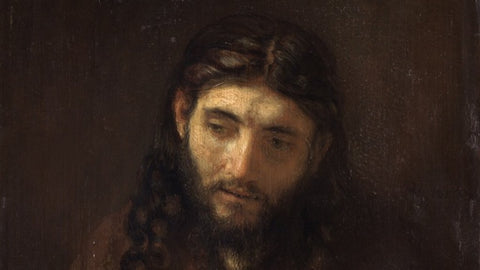
Consider the many different ways Jesus has been portrayed over the centuries or the ways his name has been employed in support of this or that cause. N. T. Wright, a prominent Jesus scholar and Anglican Bishop, observes that he is “almost universally approved of” but for “very different and indeed often incompatible reasons.” If this is the case, then we wondered what Jesus were we worshiping and whether that Jesus was one of our own making?
During the past half-century historians have made significant strides examining the most recently discovered source materials in order to think once again about existing documents like the four Gospels. The aim was to reconstruct the Jesus who the men and women in first-century Palestine would recognize and follow. Jesus was born into an ancient society constrained by millennia of social, theological, and political practices perpetuated by the minority ruling elite and facilitated by a vast majority of souls who knew of no other way. Periodically prophets would rail against the system in the name of God. But the great, colossus of ancient Rome remained sustained through the oppression of individuals, the very individuals that Jesus came to invite into a new, righteous Kingdom.
The Jesus of history and the Gospels largely displaced the conventions of his day with regard to women and the family, as well as the social standing of the poor, the wealthy, and the outcast.
On Women:
In the twenty-first century, when issues regarding the roles of men and women in religious environments are alive and controversial, Jesus’s treatment of women was prescient. His example and the privileges afforded the first female Christians provide important perspectives. The subject takes on added significance as we appreciate the meaning of the priestly roles that women play in Latter-day Saint temples. Echoing what N. T. Wright suggests in his recent book Surprised by Scripture, we must “think carefully about where our own cultures, prejudices, and angers are taking us, and make sure we conform not to the stereotypes the world offers but to the healing, liberating, humanizing message of the gospel.” He continues, “[we live in a time when] we need to radically change our traditional pictures of what men and women are and of how they relate to one another within the church, and indeed of what the Bible says on this subject.”
On the Family:
What little Jesus had to say about the family is jarring to modern ears. He replaced the household of his day with a new universal family called the Kingdom of God where all were brothers and sisters. All were welcome: the poor and the rich, men and women, bond and free, high and low, Jew and Gentile. Members were asked to live in a communal order where everyone had what they needed.
On the Poor:
At the end of Jesus’s ministry, his priorities had not shifted from those he announced by way of the Isaiah text he read as he stood in the synagogue in Nazareth. Prior to his betrayal, Jesus spoke about the Final Judgment. He reminded those who heard him then, as well as those who hear him today, that when our lives are weighed in the balance, we will be judged not on what we know, or how many things we owned, or on how many church meetings we attended; rather, we will be judged on the basis of how well we loved our neighbors, and how well we fed the hungry, clothed the naked, cared for the sick, and visited those in need (Matt. 25:31–46).
On the Wealthy:
Matthew’s Gospel records that Jesus spoke to a “rich young man” who, by his own report, kept all the commandments in Torah, the Mishnah, and the Oral Traditions. Jesus asked him to go one step further and distribute all his wealth equally amongst the poor in order to be a part of God’s kingdom (Matt. 19:21-22). The apocryphal Gospel of Hebrews records that when the young man could not take that step, he “began to scratch his head because he did not like that command.” But then, Mark’s Gospel says, “Jesus felt genuine love for [this man]” (Mark 10:21 NLT).
Father James Martin, in a memoir on his pilgrimage to the Holy Land in 2014, writes about his encounter with the story, standing on the supposed spot where Jesus told it: “Jesus ‘loved him’? Where did that come from? I had heard this Gospel story dozens of times. How had I missed that line? . . . Those three words . . . altered the familiar story and thus altered how I saw Jesus. No longer was it the exacting Jesus demanding perfection; it was the loving Jesus offering [agency]. Now I [and we] could hear him utter those words with infinite compassion for the man. . . . Jesus explicitly offers a promise of abundance to everyone” (Jesus: a Pilgrimage, 271).
Jesus invited all to be bound to him by the “covenant of salt.”
The Covenant of Salt is a three-part obligation. The meaning of the name of the covenant would have been obvious to the men and women who followed him: salt was and is the root word of salvation and it was an enormously valuable commodity in their day. At the end of our study, we came to understand a little better what N. T. Wright observes – that what mattered most to Jesus was that his true disciples were “the kind of people through whom the kingdom will be launched on earth.” Being like Jesus meant that each of us qualified for heaven through serving his “lambs.” Being like Jesus was about loving others and thereby transforming the earth, making it a Godlike place. It was what Jesus earnestly prayed for and by example asked us to pray for: “Thy kingdom come. Thy will be done in earth, as it is in heaven” (Matt. 6:10 KJV; emphasis added). God’s ultimate rule on earth will come about because we, as true disciples of Jesus Christ, are the light of the world and the salt of the earth (Matt.5:13, 14 KJV). We have covenanted. We have come away from this pilgrimage with a resolve to “have salt in ourselves, and have peace one with another” (Mark 9:50 KJV).
James and Judith McConkie will be speaking and signing books at Writ & Vision in Provo, Utah, on Tuesday, January 30 at 7 pm, and at Benchmark Books in Salt Lake City on Wednesday, February 7 at 5:30 pm..These events are free to the public.
 James W. McConkie has JD from the S. J. Quinney College of Law at the University of Utah. His practice has focused in the area of torts and civil rights for more than four decades. He has been an adjunct professor at Westminster College teaching Constitutional law for non-lawyers. He has taught Church History and New Testament courses for BYU’s Division of Continuing Education for over 15 years with his wife Judith and is the author of Looking at the Doctrine and Covenants for the Very First Time. In 2017 he and his law partner Bradley Parker created the Refugee Justice League, a non-profit organization of attorneys and other professionals offering pro-bono help to refugees who have been discriminated against on the basis of their religion, ethnicity, or national origin.
James W. McConkie has JD from the S. J. Quinney College of Law at the University of Utah. His practice has focused in the area of torts and civil rights for more than four decades. He has been an adjunct professor at Westminster College teaching Constitutional law for non-lawyers. He has taught Church History and New Testament courses for BYU’s Division of Continuing Education for over 15 years with his wife Judith and is the author of Looking at the Doctrine and Covenants for the Very First Time. In 2017 he and his law partner Bradley Parker created the Refugee Justice League, a non-profit organization of attorneys and other professionals offering pro-bono help to refugees who have been discriminated against on the basis of their religion, ethnicity, or national origin.
 Judith E. McConkie has an MFA in printmaking from BYU and a PhD in philosophy of art history and museum theory from the University of Utah. She has taught art history at the secondary and then university levels for over 40 years. She was the Senior Educator at BYU’s Museum of Art and Curator of the Utah State Capital during its major renovation project from 2004–2010. During that time she authored With Anxious Care: the Restoration of the Utah Capital. She continues to teach in BYU’s Division of Continuing Education with her husband James. She has published in Sunstone and Dialogue: A Journal of Mormon Though and has presented at Sunstone’s annual symposium. Her prints and watercolors have been exhibited nationally and in the Henry Moore Gallery in London, England. She and James are the parents of three children and 12 grandchildren.
Judith E. McConkie has an MFA in printmaking from BYU and a PhD in philosophy of art history and museum theory from the University of Utah. She has taught art history at the secondary and then university levels for over 40 years. She was the Senior Educator at BYU’s Museum of Art and Curator of the Utah State Capital during its major renovation project from 2004–2010. During that time she authored With Anxious Care: the Restoration of the Utah Capital. She continues to teach in BYU’s Division of Continuing Education with her husband James. She has published in Sunstone and Dialogue: A Journal of Mormon Though and has presented at Sunstone’s annual symposium. Her prints and watercolors have been exhibited nationally and in the Henry Moore Gallery in London, England. She and James are the parents of three children and 12 grandchildren.
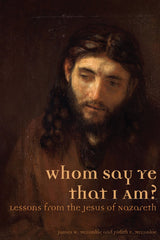 |
Whom Say Ye that I Am? Lessons from the Jesus of Nazareth Available Jan 30, 2018 |
Twelve Days of Kofford 2017 November 21 2017
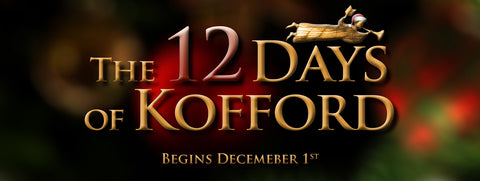
Greg Kofford Books is once again pleased to offer twelve days of discounted holiday shopping from our website!
HERE IS HOW IT WORKS: Every morning from Dec 1th through the 12th, we will be posting a DISCOUNT CODE on our Facebook or Twitter pages. Use this discount code on the corresponding day to receive 30% off select titles. The final day will be an e-book flash sale on Amazon.com.
To help you plan, here are the dates, titles, and sale prices we will be offering beginning Dec 1st. These sales are limited to available inventory. You must follow our Facebook or Twitter pages to get the discount code. Orders over $50 qualify for free shipping. Customers in the Wasatch Front area are welcome to pick orders up directly from our office in Sandy, UT.
Day 1 — Brant Gardner collection
 |
Second Witness, Vol 1: First Nephi $39.95 hardcover |
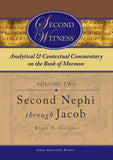 |
Second Witness, Vol 2: Second Nephi through Jacob $39.95 hardcover |
 |
Second Witness, Vol 3: Enos through Mosiah $39.95 hardcover |
 |
Second Witness, Vol 4: Alma $49.95 hardcover |
 |
Second Witness, Vol 5: Helaman through Nephi $39.95 hardcover |
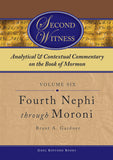 |
Second Witness, Vol 6: Fourth Nephi through Moroni $39.95 hardcover |
 |
The Gift and the Power: Translating the Book of Mormon $34.95 paperback |
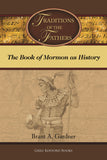 |
Traditions of the Fathers: The Book of Mormon as History $34.95 paperback |
 |
The Garden of Enid: Adventures of a Weird Mormon Girl $22.95 paperback |
 |
The Garden of Enid: Adventures of a Weird Mormon Girl $22.95 paperback |
Day 3 — The Mormon Image in Literature
 |
The Mormoness; Or, The Trials of Mary Maverick: $12.95 paperback |
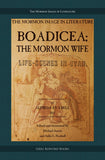 |
Boadicea; the Mormon Wife: Life Scens in Utah $15.95 paperback |
 |
Dime Novel Mormons $22.95 paperback |
 |
Women at Church: Magnifying LDS Women's Local Impact $21.95 paperback |
 |
Mormon Women Have Their Say: Essays from the Claremont Oral History Collection $31.95 paperback |
 |
Voices for Equality: Ordain Women and Resurgent Mormon Feminism $32.95 paperback |
 |
Joseph Smith's Polygamy, Vol 1: History $34.95 paperback |
 |
Joseph Smith's Polygamy, Vol 2: History $34.95 paperback |
 |
Joseph Smith's Polygamy, Vol 3: Theology $25.95 paperback |
 |
Joseph Smith's Polygamy: Toward a Better Understanding $19.95 paperback |
 |
Modern Polygamy and Mormon Fundamentalism: The Generations after the Manifesto $31.95 paperback |
 |
Mormon Polygamous Families: Life in the Principle $24.95 paperback |
 |
Prisoner for Polygamy: The Memoirs and Letters of Rudger Clawson at the Utah Territorial Penitentiary, 1884–87 $29.95 paperback |
 |
Who Are the Children of Lehi? DNA and the Book of Mormon $15.95 paperback |
 |
“Let the Earth Bring Forth”: Evolution and Scripture $15.95 paperback |
 |
Mormonism and Evolution: The Authoritative LDS Statements $15.95 paperback |
 |
Parallels and Convergences: Mormon Thought and Engineering Vision $24.95 paperback |
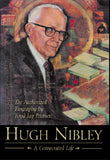 |
Hugh Nibley: A Consecrated Life $32.95 hardcover |
 |
“Swell Suffering”: A Biography of Maurine Whipple $31.95 paperback |
 |
William B. Smith: In the Shadow of a Prophet $39.95 paperback |
 |
LDS Biographical Encyclopedia, 4 Vols $259.95 paperback |
 |
The Man Behind the Discourse: A Biography of King Follett $29.95 paperback |
 |
Liberal Soul: Applying the Gospel of Jesus Christ in Politics $22.95 paperback |
 |
A Different God? Mitt Romney, the Religious Right, and the Mormon Question $24.95 paperback |
 |
Common Ground—Different Opinions: Latter-day Saints and Contemporary Issues $31.95 paperback |
 |
Even Unto Bloodshed: An LDS Perspective on War $29.95 paperback |
 |
War & Peace in Our Time: Mormon Perspectives $29.95 paperback |
 |
The End of the World, Plan B: A Guide for the Future $13.95 paperback |
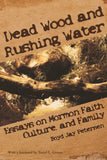 |
Dead Wood and Rushing Water: Essays on Mormon Faith, Culture, and Family $22.95 paperback |
 |
Mr. Mustard Plaster and Other Mormon Essays $20.95 paperback |
 |
Writing Ourselves: Essays on Creativity, Craft, and Mormonism $18.95 paperback |
 |
On the Road with Joseph Smith: An Author's Diary $14.95 paperback |
 |
Hearken O Ye People: The Historical Setting of Joseph Smith's Ohio Revelations $34.95 hardcover |
 |
Fire and Sword: A History of the Latter-day Saints in Northern Missouri, 1836–39 $36.95 hardcover |
 |
A House for the Most High: The Story of the Original Nauvoo Temple $29.95 paperback |
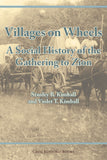 |
Villages on Wheels: A Social History of the Gathering to Zion $24.95 paperback |
 |
Mormonism in Transition: A History of the Latter-day Saints, 1890–1930, 3rd ed. $31.95 paperback |
Day 11 — International Mormonism
 |
Tiki and Temple: The Mormon Mission in New Zealans, 1854–1958 $29.95 paperback |
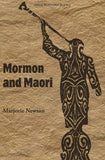 |
Mormon and Maori $24.95 paperback |
 |
The Trek East: Mormonism Meets Japan, 1901–1968 $39.95 paperback |
 |
From Above and Below: The Mormon Embrace of Revolution, 1840–1940 $34.95 paperback |
 |
The History of the Mormons in Argentina $24.95 paperback |
 |
For the Cause of Righteousness: A Global History of Blacks and Mormonism, 1830–2013 $32.95 paperback |
On the eighth day of Kofford: 30% contemporary issues titles! December 08 2016

All contemporary issues titles are 30% off December 8th. These special prices are only available for one day, so don't wait!
Orders over $50 qualify for free shipping. Also, local Utah customers can opt to pick up their order directly from our office in Sandy (select this option under the shipping menu).
For more information about the Twelve Days of Kofford holiday sales, click here.
 |
Women at Church: Magnifying LDS Women's Local Impact Retail: $21.95 |
 |
Common Ground—Different Opinions: Latter-day Saints and Contemporary Issues Retail: $31.95 |
 |
The Liberal Soul: Applying the Gospel of Jesus Christ in Politics Retail: $22.95 |
 |
Voices for Equality: Ordain Women and Resurgent Mormon Feminism Retail: $32.95 |
Twelve Days of Kofford Christmas Sale 2016 November 30 2016

MERRY CHRISTMAS FROM GREG KOFFORD BOOKS
Greg Kofford Books is pleased to announce our annual holiday sale on select popular titles beginning December 1st – December 12th.
Here's how it works: at the stroke of midnight each day, a new blog post will go live on our website listing that day's special offerings along with a discount code that you can enter at check-out to get the holiday price. It's that simple. We will also be posting the daily offering and discount code on our Facebook page at 7am.
*Orders over $50 qualify for free shipping (continental U.S. customers only). Local Utah customers can stop by our office in Sandy to pick up their orders as well. Holiday inventory on some titles may be limited, so be sure to take advantage of the daily sale early.*
To help you plan in advance, here are our scheduled sales:
Day 1 — Brant Gardner titles
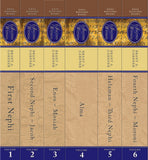 |
Second Witness: Analytical & Contextual Commentary on the Book of Mormon series
|
 |
The Gift and Power: Translating the Book of Mormon |
 |
Traditions of the Fathers: The Book of Mormon as History Best Religious Non-fiction Award, Association for Mormon Letters |
Day 2 — Adam Miller titles (essays in Mormon theology)
 |
Rube Goldberg Machines: Essays in Mormon Theology Retail $18.95 |
 |
Future Mormon: Essays in Mormon Theology Retail: $18.95 |
Day 3 — Personal Essays
 |
Dead Wood and Rushing Water: Essays on Mormon Faith, Culture, and Family Retail: $22.95 |
 |
Mr. Mustard Plaster and Other Mormon Essays by Mary Lithgoe Bradford Retail: $20.95 Sale price: $14.67 |
 |
Writing Ourselves: Essays on Creativity, Craft, and Mormonism Retail: $18.95 |
Day 4 — Blake T. Ostler titles
 |
Exploring Mormon Thought series by Blake T. Ostler 30% off each title |
 |
Fire on the Horizon: A Meditation on the Endowment and Love of Atonement Retail: $17.95 |
Day 5 — Contemporary Studies in Scripture
 |
Authoring the Old Testament: Genesis — Deuteronomy Retail: $26.95 |
 |
Re-reading Job: Understanding the Ancient World's Greatest Poem Retail: $20.95 |
 |
Search, Ponder, and Pray: A Guide to the Gospels Retail: $27.95 |
 |
Beholding the Tree of Life: A Rabbinic Approach to the Book of Mormon Retail: $21.95 |
 |
The Vision of All: Twenty-five Lectures on Isaiah in Nephi's Record Retail: $25.95 |
Day 6 — International Mormonism
 |
The Trek East: Mormonism Meets Japan, 1901–1968 Retail: $39.95 |
 |
Mormon and Maori Retail: $24.95 Best International Book Award, Mormon History Association |
 |
Tiki and Temple: The Mormon Mission in New Zealand, 1854–1958 Retail: $29.95 Best International Book Award, Mormon History Association |
 |
For the Cause of Righteousness: A Global History of Blacks and Mormonism, 1830–2013 Retail: $32.95 Best Book Award, Mormon History Association |
 |
The History of the Mormons in Argentina Retail: $24.95 |
 |
From Above and Below: The Mormon Embrace of Revolution, 1840 – 1940 Retail: $34.95 Best International Book Award, Mormon History Association |
Day 7 — Polygamy titles
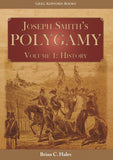 |
Joseph Smith's Polygamy: History and Theology Now in paperback! 30% off each title |
 |
Joseph Smith's Polygamy: Toward a Better Understanding Retail: $19.95 |
 |
Modern Polygamy and Mormon Fundamentalism: The Generations after the Manifesto Retail: $31.95 Best Book Award, John Whitmer Historical Association |
 |
Mormon Polygamous Families: Life in the Principle Retail: $24.95 |
 |
Prisoner for Polygamy: The Memoirs and Letters of Rudger Clawson at the Utah Territorial Penitentiary, 1884–87 Retail: $29.95 |
Day 8 — Contemporary Issues
 |
Women at Church: Magnifying LDS Women's Local Impact Retail: $21.95 |
 |
Common Ground—Different Opinions: Latter-day Saints and Contemporary Issues Retail: $31.95 |
 |
The Liberal Soul: Applying the Gospel of Jesus Christ in Politics Retail: $22.95 |
 |
Voices for Equality: Ordain Women and Resurgent Mormon Feminism Retail: $32.95 |
Day 9 — Biography
 |
Hugh Nibley: A Consecrated Life Retail: $32.95 Best Biography Award, Mormon History Association |
 |
“Swell Suffering”: A Biography of Maurine Whipple Retail: $31.95 Best Biography Award, Mormon History Association |
 |
William B. Smith: In the Shadow of a Prophet Retail: $39.95 Best Biography Award, John Whitmer Historical Association |
 |
The Man Behind the Discourse: A Biography of King Follett Retail: $29.95 |
Day 10 — War and Peace
 |
War & Peace in Our Time: Mormon Perspectives Retail: $29.95 |
 |
Even unto Bloodshed: An LDS Perspective on War Retail: $29.95 |
 |
The End of the World, Plan B: A Guide for the Future Retail: $13.95 |
 |
Saints of Valor: Mormon Medal of Honor Recipients, Updated 2nd Edition Retail: $31.95 |
Day 11 — Mormon Image in Literature
 |
The Mormoness; Or, The Trials Of Mary Maverick: A Narrative Of Real Events Retail: $12.95 |
 |
Boadicea; the Mormon Wife: Life Scenes in Utah Retail: $15.95 |
Day 12 — Ebook Flash Sale — $1.99 for select titles
To be announced. Stay tuned!
20% Off Sale on Women's Issues Books October 27 2015

With the recently published essays approved by the LDS Church on the topics of women and priesthood and the doctrine of Heavenly Mother, now would be a great time to read up on the conversations surrounding women in Mormonism.
Greg Kofford Books is pleased to offer 20% off the following titles beginning today through November 3rd when you type "ESSAYS" in the discount code box at checkout.
Mormon Women Have Their Say
Edited by Claudia L. Bushman and Caroline Kline
Sale Price: $25.56 + tax, paperback
(enter the word "ESSAYS" in the discount box at checkout)
From Claudia Bushman: Throughout the tangled past of the Church of Jesus Christ of Latter-day Saints, women have been active and vocal participants. Their journals and diaries, primarily from the nineteenth century, have been plumbed for evidence of their experience and attitudes. Less is known and written about contemporary Mormon women. LDS women today still live in a patriarchal society. What is it like for them? How to they respond to the Church they have joined or inherited? Can they make space for their interests? How do they envision their contemporary role in the Church? What are the issues that define their lives? Writing our own stories empower us. Many of these narrators do not normally speak out. This project preserves and perpetuates their voices and memories. The silent majority goes on record.
In light of the Gospel Topic essay "Mother in Heaven," readers would find the chapter, "Heavenly Mother," interesting as it explores the views and feelings of contemporary LDS women on this important theological topic.
Praise for Mormon Women Have Their Say:
“Mormon women have always had a lot to say, but generation after generation, their voices fade away. The problem is not just that archives and manuals favor the writings of male leaders. The real problem is that few of us know how to listen to seemingly common stories. We revere our sisters but don’t understand them. The essays in this volume go beyond collecting and preserving to the hard work of interpretation.” — Laurel Thatcher Ulrich, author of Well-Behaved Women Seldom Make History
Women at Church: Magnifying LDS Women's Local Impact
By Neylan McBaine
Sale Price: $17.56 + tax, paperback
(enter the word "ESSAYS" in the discount box at checkout)
From Neylan McBaine: This book is predicated on a single belief: that there is much more we can do to see, hear, and include women at church. In an effort to increase awareness of that belief and move all Church members to act on it, I have written this book as an inducement toward greater empathy for those who feel unseen, unheard, and unused, and a strategic guide to improving our gender cooperation in local Church governance. This book is for men and women who either are themselves engaged in this wrestle or know someone who is. It is for women who have been sitting on the sidelines of the media conversation around Mormon women, not sure where they fit or what they feel, but they resonate with at least some of what has been said. It is for the women who can't understand why someone would be discontent in the light of our glorious doctrine, but whose daughter or sister or friend or Relief Society sister may not be feeling so at ease.
Praise for Women at Church:
“A pivotal work replete with wisdom and insight. Neylan McBaine deftly outlines a workable programme for facilitating movement in the direction of the ‘privileges and powers’ promised the nascent Female Relief Society of Nauvoo.” — Fiona Givens, co-author of The God Who Weeps: How Mormonism Makes Sense of Life
Voices for Equality: Ordain Women and Resurgent Mormon Feminism
Edited by Gordon Shepherd, Lavina Fielding Anderson, and Gary Shepherd
Sale Price: $26.36 + tax, paperback
(enter the word "ESSAYS" in the discount box at checkout)
From Lavina Fielding Anderson: In larger Mormon society, I consider this book to be a third voice in an intensifying conversation. The first voice was that of Sheri Dew, president and CEO of Deseret Book, spelling out her position in Women and the Priesthood. The second voice followed a year later with the appearance of Neylan McBaine's Women at Church: Magnifying Women's Local Impact. This book, Voices for Equality: Ordain Women and Resurgent Mormon Feminism, is the third book in as many years to explore this disquieting, yet immensely significant topic. Broader in scope than either Dew or McBaine's works, it is data driven, using a combination of sociological and historical analysis, political and theological explorations, and sometimes wrenching personal experiences.
Praise for Voices for Equality:
"In these pages, some of Mormonism's finest researchers and thinkers bring a richness of historical and scholarly perspective and a powerful new survey of tens of thousands of Mormon people to bear on headline-making issues like women's ordination, sister missionaries, church discipline, the internet and faith, and change in the LDS church. This book is a much needed mirror for our time.” — Joanna Brooks, co-editor of Mormon Feminism: Essential Writings and author of The Book of Mormon Girl: A Memoir of an American Faith
SALE ENDS 11-3-15
Q&A with Voices for Equality Editors June 23 2015
Voices For Equality: Ordain Women and Resurgent Mormon Feminism
Edited by Gordon Shepherd, Lavina Fielding Anderson, and Gary Shepherd
Approx. 425 pages
Paperback $32.95 (ISBN 978-1-58958-758-8)
Pre-order your copy here.
Q: What led the three of you to this project? How did it come together with so many authors?
Gary Shepherd: Lavina, of course, is a long-time Mormon feminist who has been at the forefront in challenging the LDS Church to re-examine traditional assumptions about a variety of issues and to become a more open, flexible, and tolerant organization. Gordon and Gary have written about processes of change in Mormonism and the LDS Church for over 30 years, and specifically predicted in their first co-authored book, A Kingdom Transformed (University of Utah Press, 1984), that women’s status would become a major issue in the church in the decades to come. When OW first began to stir publicity for its cause in March of 2013, Gordon and Gary saw an opportunity for first hand sociological observation of what promised to be a potent new expression of LDS women’s movement towards status equality with men. The three of us were well- acquainted from many years of overlapping scholarly involvements and agreed that a book that drew from a wide spectrum of Mormon scholars and activists on this subject could be an important stimulus for a larger, constructive discussion within LDS circles on the prospects for change. Lavina was especially well-connected with key people involved in both OW and Mormon feminism generally, and we were able to successfully tap into her network for authors who could address the various issues we thought were important.
Q: Who are the intended audiences for this book? What do you hope each get out of it?
Gary Shepherd: We hope the book will particularly have wide enough appeal to attract a general, lay LDS readership. Many LDS members know only what they read and see in media sources about Mormon feminist goals and their rationale, or what they hear in church from both leaders and ordinary gossip. At the same time, Mormon women tend to be uncommonly well-educated, especially younger generations, and their personal experience in contemporary secular society—in school, careers, organizations, and every other arena of social life—fosters increasingly taken-for-granted assumptions about their equality with men. When these assumptions are not institutionally applied within the LDS religious realm, it must cause some degree of dissonance and at least private musing about the causes, consequences, and possible resolutions of this significant discrepancy. So this is the first audience we hope will be reached, at least enough to provide an impetus for further personal reflection and conversation with family, friends, and colleagues.
Otherwise, there is enough of a scholarly approach taken in many chapters of the book to certainly appeal to Mormon intellectuals, academics, and scholars. For those among these categories who are themselves committed in various ways to advance gender equality in the Church, we think this book will help crystallize views and perhaps serve as a catalyst for more effective efforts to bring about change through writing, speaking, discussion, and assignment of the book as a text in Mormon studies courses.
Q: This book appears at a time when social media and podcasting have soared in popularity as perhaps the primary ways, especially among young people, to communicate about people, events, and ideas. How does an academic book like this fit into that crowd? Can it say and do things that these other forms of communication cannot?
Gary Shepherd: Yes, certainly. As you note, we have brought together a relative large and diverse set of authors—some activists, some scholars—in one place—this book—and have solicited and organized their diverse, expert, well-reviewed, written contributions around a set of pre-planned, coherent topical subjects. We don’t think you can easily get this kind of all-in-one-place coherent, quality education from popular social media sources.
Q: The title of your book, Voices for Equality: Ordain Women and Resurgent Mormon Feminism implies that in Ordain Women there is both an intimate connection but also possibly a significant divergence from prior iterations of Mormon feminism. Is this the case? And if so, how?
Gary Shepherd: Ordain Women is not exclusively a younger generation movement, but certainly many of the leaders are of a younger generation (e.g, 20-40 or so years of age), and many of the women (and men) who have posted OW Profiles on-line are also younger. These are the generations mentioned above who take-for-granted gender equality in a modern, secular world and yet experience its absence in the realm— religious and spiritual—that for many is most important to them. They are action oriented, more prone to speak directly to power, and are genuinely committed to bringing about the gender equality they see lacking in their church within their own lifetime. At the same time, OW would not even exist without the conceptual framework and organizational foundations established by second wave Mormon feminists in the 1970s, 80s, and 90s and the steps they took to challenge established patriarchal traditions through their persistent and persuasive writings and personal witness. And, in fact, several of the founding and continuing leaders of OW are older Mormon feminists who have never stopped working for change and are grateful to see that their earlier contributions are now being incorporated into this new, energetic, and concrete activist expression of hope for reform. This intimate connection you speak of between prior expressions of Mormon feminism and current OW activists is, in fact, one of the points strongly made in several chapters of Voices.
Q: In the preface to the book, Lavina writes that she considers this volume to be the third literary voice in an intensifying conversation about women in the LDS church, along with Sheri Dew's Women and Priesthood, and Neylan McBaine's Women at Church: Magnifying LDS Women's Local Impact. Tell us more about this dynamic and how Voices for Equality makes its contribution.
Gary Shepherd: Simply that Dew’s position—although perhaps had it been given voice several decades ago would likely have been perceived as quite liberal for simply discussing issues of equality—currently occupies the most conservative end of the contemporary continuum. McBaine’s book occupies middle ground, advocating changes that give women more recognition and participation opportunities in worship and ecclesiastical affairs but not fundamentally moving LDS women into the same sphere of equality within the Church that they claim as their intrinsic right in the larger world. It is movement into this ultimate sphere that of course OW advocates. Our book, represented by a diverse set of authors, is not unanimous in its endorsement of OW strategies and goals or single-minded in its preoccupation with OW per se. But anyone who reads our book in its entirety with an open mind should at least be forced to re-examine prior assumptions and begin thinking more clearly and systematically about the values and changes that Mormon feminists are so earnestly and persuasively advocating.
Q: There are a variety of methodological approaches you and the various authors have taken in documenting and narrating the phenomenon that has been Ordain Women within the wider context of Mormon feminism. Tell us a little about these various approaches and how they contribute to our understanding of these events, people, and ideas.
Gary Shepherd: No issue of broad social scope can adequately be comprehended by a single method or point of view. There is always a historical, social, and cultural context within which every current concern is embedded. So we have solicited historians to identify and narrate the complex of interrelated events that generated both original Mormon feminism and subsequently OW. We have solicited sociologists, psychologists, and anthropologists to explore both past and present patterns of social interaction and cultural meaning that give shape and substance to Mormon feminism and OW and reveal the nature of conflict between these movements and the established institutional authority and traditions of the LDS church. Theologians have helped us to understand the rationale behind authoritative proclamations of belief, doctrine, and religious practice and how, within these proclamations, there is ground for change and reinterpretation. And, importantly, individuals who have made history by engaging with others in thought, hopeful prayer, organizational participation, and direct action are drawn upon to provide accounts of their own lived experience.
Q: How do you see Voices for Equality positioned within the wider universe of Mormon feminism and questions revolving around Mormon women? What might you hope to see in the future as far as scholarship on these subjects is concerned?
Pre-order your copy now.





